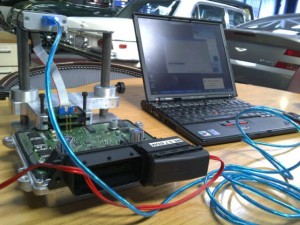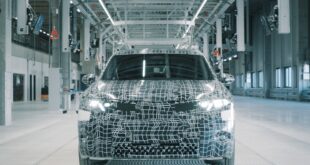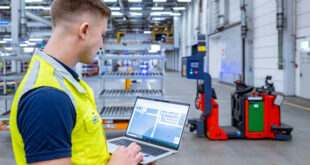 From BMWBlog .com – To find out more interesting BMW news and stories, visit their site here.
From BMWBlog .com – To find out more interesting BMW news and stories, visit their site here.
BMW Blog shares with us their thoughts on the technology development for cars in this recent editorial. With so many technologies that are sometimes exceeding those that we see on sci-fi movies, nobody would have imagined this possible ten years back. Cars have become connected. Cars are now a mobility platform. It has surpassed its role as a mode of transportation and have evolved into something that allows network connections through the following technologies:
1. The car or key become your credit card.
Just recently, BMW showcased NFC (Near Field Communication) in a car key. NFC is a short-range high frequency wireless communication technology which enables the exchange of data between devices over about a 10 centimeters (3.9 in) distance.The innovative technology allows for your key to act as a credit card or a mean of identification.
But don’t discard your vehicle’s functions. In the near future, the automobile can be used as a smart card to pay for highway tools, parking fees and even fuel. Skymeter is a company that develops products in this segment that would allow the consumers to receive a single bill at the end of the month that would include every car-related cost.
2. Over-the-air software upgrades for your car.
Tired of trips to your dealership for car diagnostics and software upgrades? You might be in luck. Several telematics experts state that current cars could and will implement over-the-air upgrades and diagnostics sooner rather than later. Many of today’s cars come equipped with wireless services provided by national mobile operators, in BMW’s case, AT&T. Some of the features currently present in automobiles allow for direct access to emergency and call center services, traffic information and other portal news, all connected via satellite and in-car wireless.Next layer of services can built atop of the existing technology and through a satellite link could provide the ability to reprogram a transmission controller, recalibrate the braking system or deliver software updates for your onboard computers and engine. Safety plays an important role and it can be achieved by allowing the consumers to decide if they would like to proceed with over-the-air updates that can only be delivered, for example, when the car is parked.
Let’s take this a step even further. What about the more convenient way of fixing software-based technical issues over-the-air? Automakers would embrace this, especially since it would reduce the costs of recalling a car.
3. Apps that control your car.At the 2010 Paris Motor Show, BMW introduced “My BMW Remote†application available for iOS devices (iPhone, iPod Touch and iPad). The newly developed app includes the remote functions of BMW Assist and more: Remote Door Lock & Unlock, Remote Climate Control, Remote Light Flash, Google Local Search and Vehicle Finder. But BMW is not alone in this area. Ford, GM, Volvo, among other automakers, offer similar car apps. The application integration with the car goes deeper than ever and automakers began to offer lower-level access to some of the core functions of a car.
Visionaries go even further. Garry Golden, lead futurist with NYC-based FutureThink, predicts in an article for Mashable a future where machine-t0-machine interfaces will be automated eliminating the need of human interaction. “As you walk towards the car, your phone will adjust temperature, turn on the music and unlock the door as you step closer.â€
4. Control the car with your voice.
It has been done for years, but automakers plan to take these features even further. From the voice commands to activate the stereo or call someone in your phonebook, to the next generation telematics that give your voice full control over the car. BMW is already using voice commands that can control external devices and select genre, artist, album, and song title with the voice control system included with Navigation System. Further enhancements would allow apps like Pandora to be controlled via voice by simple commands: “Play blues†and the app would connect to the web and shuffle around the appropriate genre.What about voice-to-text features? In the near future, the driver would have the ability to dictate messages, emails, perform Google searches and other actions that these days require the use of your hands.
BMW will showcase more in-car futuristic features at the upcoming Geneva Motor Show where it will introduce the BMW ConnectedDrive Concept.
5. Cars to create their own social network.
This has yet to be accomplished, but the rapid technology advancements and the Y-Generation being driver behind social media, could potentially expand to automobiles. Next generation telematics services could offer a real-time interaction between cars with the driver being the initiator and controller of the environment. Essentially drivers could connect with others on the road by creating a connection between their cars and a real-time collaboration could result in a form of a small social network where the players can exchange information. Location-based apps within the car could take this interaction a step further by allowing in-car push notifications to alert the driver that the car’s “friends†are in the area.“Friending†another car sounds futuristic today, but a possibility in the near future.
Facebook on four wheels? More reality than a dream.
Source: BMW Blog
 BMW.SG | BMW Singapore Owners Community The Ultimate BMW Community – Established Since 2001
BMW.SG | BMW Singapore Owners Community The Ultimate BMW Community – Established Since 2001














